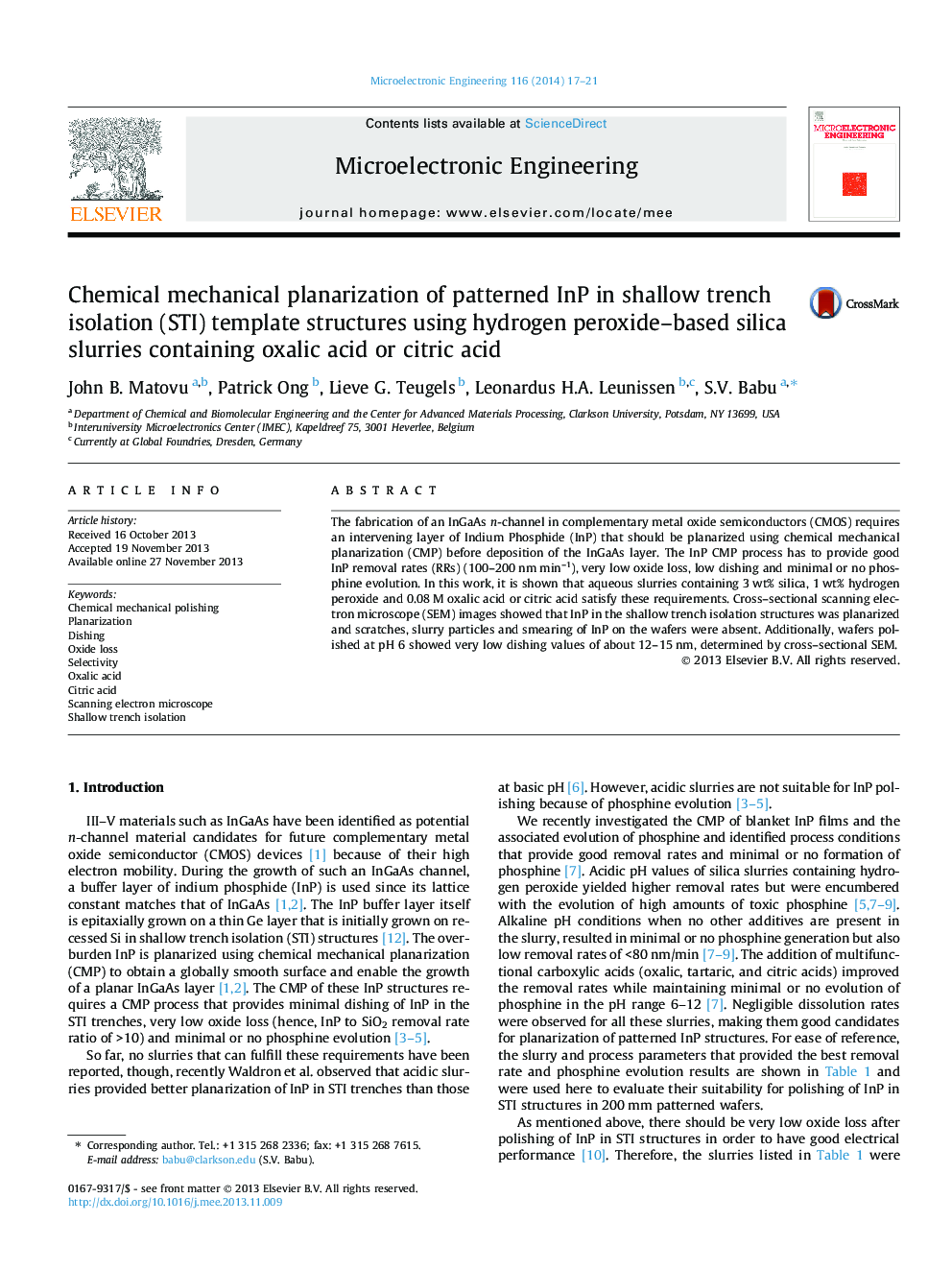| Article ID | Journal | Published Year | Pages | File Type |
|---|---|---|---|---|
| 542750 | Microelectronic Engineering | 2014 | 5 Pages |
•Aq. silica containing H2O2 and oxalic or citric acid was used in CMP of InP–STI.•The slurries planarized the InP in the STI trenches.•Scratches, slurry particles and smearing of InP were absent on planarized surface.•Between 12 and 15 nm of InP dishing were observed at pH 6.•The oxide loss was <20 nm at pH 6 and 8 and <30 nm at pH 10.
The fabrication of an InGaAs n-channel in complementary metal oxide semiconductors (CMOS) requires an intervening layer of Indium Phosphide (InP) that should be planarized using chemical mechanical planarization (CMP) before deposition of the InGaAs layer. The InP CMP process has to provide good InP removal rates (RRs) (100–200 nm min–1), very low oxide loss, low dishing and minimal or no phosphine evolution. In this work, it is shown that aqueous slurries containing 3 wt% silica, 1 wt% hydrogen peroxide and 0.08 M oxalic acid or citric acid satisfy these requirements. Cross–sectional scanning electron microscope (SEM) images showed that InP in the shallow trench isolation structures was planarized and scratches, slurry particles and smearing of InP on the wafers were absent. Additionally, wafers polished at pH 6 showed very low dishing values of about 12–15 nm, determined by cross–sectional SEM.
Graphical abstractFigure optionsDownload full-size imageDownload as PowerPoint slide
